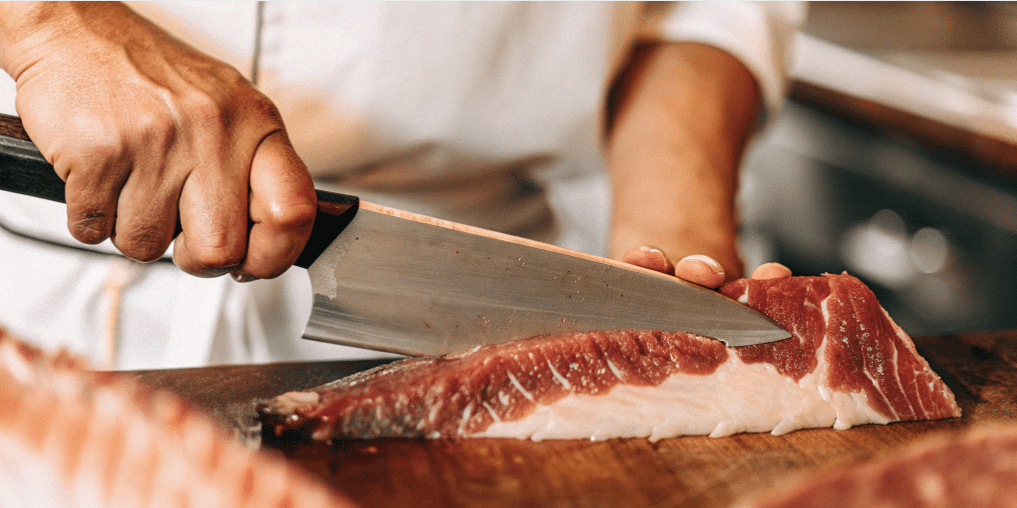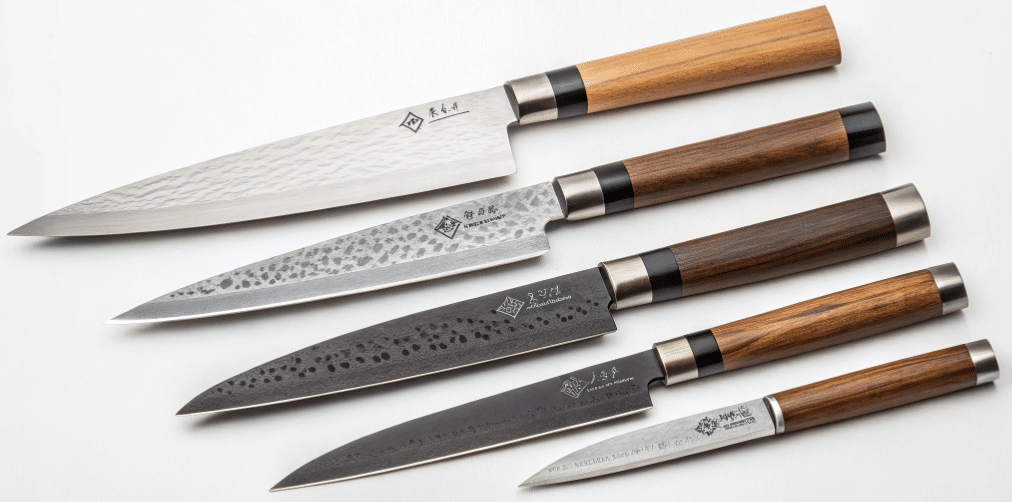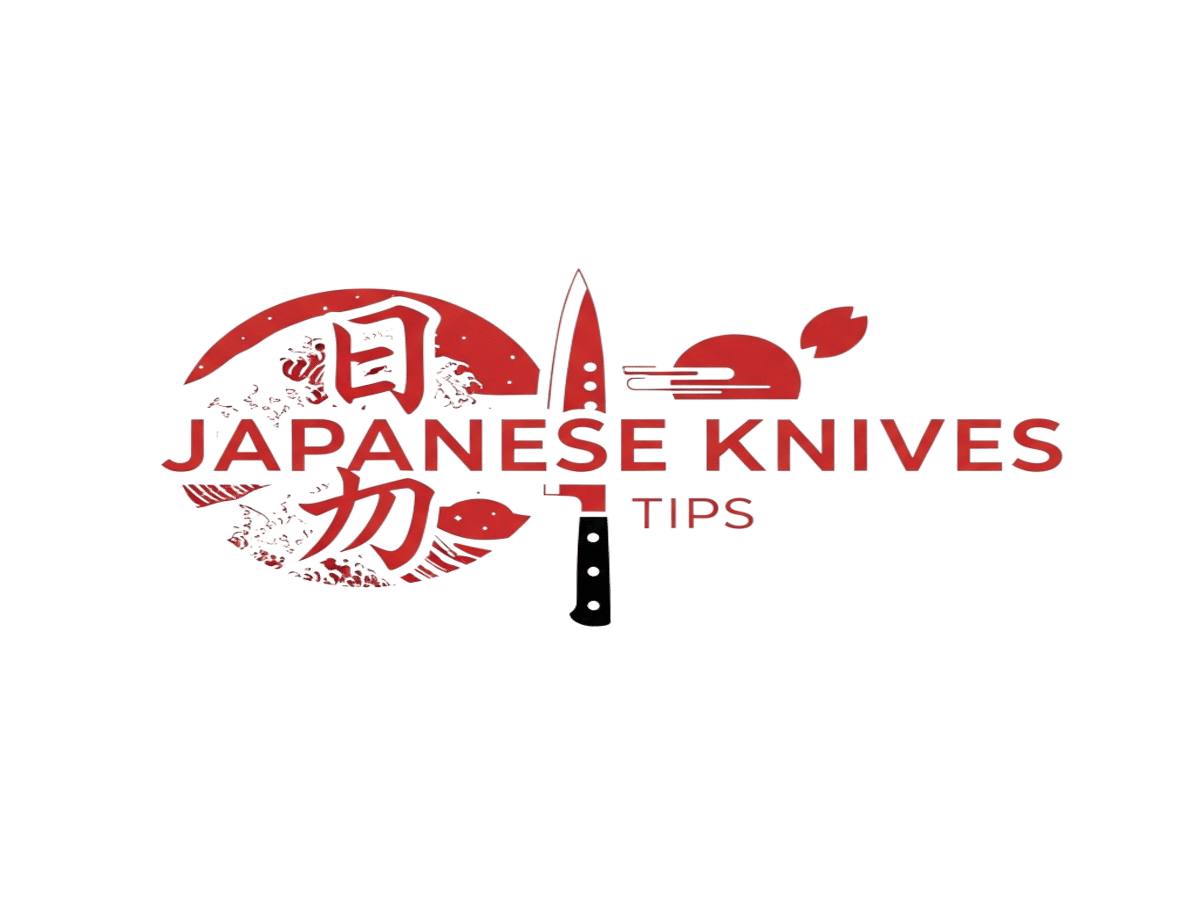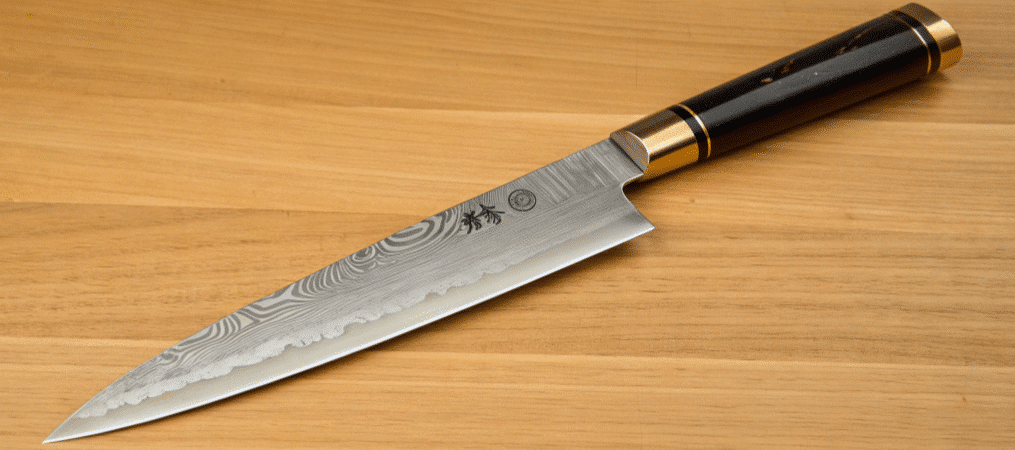If you like cooking chicken or other birds, you’ve probably heard of honesuki knives. These are Japanese knives made just for breaking down poultry. The blade is short, stiff, and shaped like a triangle. That design helps you get right into the joints and bones with ease. The sharp tip and strong heel make it handy for cutting through skin, cartilage, and meat without much effort. Honesuki knives are especially useful for de boning chickens and other birds, making the process of removing bones precise and efficient.
I’ve found that honesuki knives are a great tool for anyone who cooks poultry often. They’re not just for pros; home cooks can get a lot out of using one. Compared to a traditional boning knife, the honesuki’s specialized design excels at de boning tasks, especially when working with poultry. Whether you’re boning a chicken or filleting fish, this knife handles those tasks well.
What Makes Honesuki Knives Special?

The shape of a honesuki blade is different from most knives you might have in your kitchen. It has a thick spine and a sharp, pointed tip. The blade length usually sits between 145 and 150 millimeters. This size is just right for working around small bones and joints.
Unlike flexible western style knives that bend a bit, honesuki knives have a rigid blade. That rigidity lets you apply pressure without worrying about the blade bending or snapping. The large heel on the blade’s back is perfect for scraping meat off bones or making strong cuts through cartilage.
Many honesuki knives come in carbon steel or stainless steel. Carbon steel holds a sharp edge longer but needs a bit more care to avoid rust. Stainless steel is easier to maintain but might dull faster. You’ll also find honesuki knives with either single bevel or double bevel edges. Single bevel blades have one sharp side, which gives super precise cuts, though they require some skill to sharpen. Double bevel blades are easier for beginners to handle. For those interested in exploring the types of Japanese knives, understanding these options can help you choose the best knife for your kitchen.
How Does a Honesuki Compare to Other Knives?
If you’ve used western style boning knives before, you’ll notice some key differences. Western knives often have thinner, more flexible blades. They’re great for filleting fish or cutting thin meat but aren’t as sturdy for heavy poultry work. The honesuki’s stiff, triangular blade shines when you need to cut through joints and cartilage cleanly. For breaking down poultry, many consider the honesuki the best knife for the job.
Compared to other Japanese knives like the santoku or gyuto, the honesuki is more specialized. Those knives are all-rounders, good for chopping veggies, slicing meat, and more. The honesuki focuses on poultry and boning tasks. That focus makes it a better pick if you want a knife that’s perfect for breaking down birds.
Picking the Right Honesuki Knife

Choosing a honesuki knife depends on what you plan to do with it. If you work with larger birds like turkey, a longer blade might suit you better. For smaller birds or detailed work, a shorter blade offers better control.
Think about the blade material too. Carbon steel knives are tough and hold their edge well, but they need drying right after use to avoid rust. Stainless steel knives are easier to care for but may need sharpening more often.
Also, consider the bevel style. Single bevel blades offer sharper, more precise cuts but need practice to keep sharp. Double bevel knives are easier to sharpen and handle if you’re new to this type of knife.
Don’t forget your budget and brand reputation. Some makers have been crafting these knives for many years and have built a solid reputation for quality. It’s worth spending a bit more on a knife that will last and feel good in your hand. Choosing the right honesuki can improve your efficiency and results in the kitchen.
How to Use a Honesuki Knife
Using a honesuki knife well takes some practice, but it’s pretty straightforward. Start by making sure your knife is sharp. A dull blade makes any job harder and less safe.
When breaking down poultry, use gentle, precise cuts. The sharp tip helps you get into tight spots around joints. You don’t need to force the blade through bones; instead, work around the joints and cartilage. The large heel is great for scraping meat off bones or cutting through tougher parts like skin. The honesuki excels at making precise cuts around joints and separating meat from bone, making it a superior tool for butchery tasks that require accuracy and delicacy.
Try different birds to get comfortable with the knife’s feel. You’ll find it gets easier with time, and you’ll appreciate how much control you have. If you want, you can watch some videos or take a quick class on knife skills to boost your confidence.
Always cut away from your body and use a sturdy cutting board. These simple steps keep things safe and make your work more efficient.
Taking Care of Your Honesuki
To keep your knife in good shape, wash it by hand right after use and dry it thoroughly. Avoid putting it in the dishwasher since harsh detergents and heat can damage the blade and handle.
Store your knife in a dry place, like a knife block or on a magnetic strip. This prevents rust and keeps the edge sharp longer.
Sharpen your honesuki regularly. Using a sharpening stone is best, especially for single bevel blades. If you’re not confident, many places offer professional sharpening services. A well-sharpened honesuki is essential for safe and efficient poultry preparation, making your cutting easier and safer.
Why I Recommend a Honesuki Knife
I really like having a honesuki knife in my kitchen. It’s a tool that makes poultry prep easier and more precise. Using a honesuki can truly elevate your overall cooking experience, making each step feel more controlled and enjoyable. You don’t have to wrestle with the meat or bones because the knife is designed to work with the bird’s natural joints.
If you cook chicken, duck, turkey, or other birds often, this knife is a smart choice. It’s not just for pros—home cooks can get a lot of use out of it too.
Even if you already have boning knives, the honesuki offers something different. It’s stiffer and shaped for the job in a way that western style knives aren’t. Plus, it’s versatile enough to handle some fish filleting or small meat cutting.
Where to Find a Good Honesuki Knife
If you want to shop for a honesuki knife, many kitchen stores and online shops carry them. Look for brands with good reviews and a history of making quality knives.
Some stores in cities like Toronto, Calgary, Vancouver, Edmonton, and Ottawa often stock honesuki knives. You might also find specialty knife shops that carry Japanese knives.
Before buying, see if you can hold the knife or watch videos to get a feel for it. The right knife should feel comfortable in your hand and suit your cutting style.
A Few Things to Keep in Mind
Using a honesuki knife is easy once you get used to it, but it does require some care. Keep it sharp and clean, and you’ll have a tool that lasts many years.
For example, when breaking down a chicken, the honesuki is ideal for removing the wings by carefully cutting around the joint to separate them from the carcass.
Also, remember it’s not made for cutting through hard bones. The honesuki is designed for working around the bone and joints, not cutting through them. For that, you’ll want a cleaver or a heavier western style knife.
If you’re unsure about sharpening, don’t worry. There are plenty of guides and professionals who can help you keep your knife in top shape.
Final Thoughts on Honesuki Knives
Honesuki knives are a solid pick for anyone who enjoys cooking poultry. Their unique design and sharp blade make breaking down birds easier and more precise.
They work well for home cooks and chefs alike and can handle other tasks like filleting fish or trimming meat. The honesuki is recognized by cooks around the world for its effectiveness in poultry preparation, making it a valued tool in kitchens globally.
If you want a knife that’s built for the job and lasts a long time, a honesuki is worth considering. Just remember to care for it properly, and it will serve you well.
Give one a try, and you might find it changes how you prepare poultry for the better. Happy cooking!
FAQs
What makes a honesuki knife different from other boning knives?
A honesuki knife has a stiff, triangular shaped blade that’s great for cutting around joints and bones. Unlike flexible western style knives, it doesn’t bend, so you get more control and can apply pressure easily. Its sharp tip and large heel help with precise cuts and scraping meat off bones.
Can I use a honesuki knife for things other than poultry?
Yes! While it’s designed for poultry, many people use it for filleting fish or trimming small cuts of meat. It’s handy for tasks that need sharp, accurate cuts but isn’t made for chopping through hard bones.
How do I keep my honesuki knife sharp and ready?
Keep it clean and dry after each use. Hand wash only—no dishwasher. Sharpen it regularly with a sharpening stone, especially if it’s a single bevel blade. If you’re not sure how, plenty of pros can sharpen it for you. A sharp knife makes your work easier and safer.

